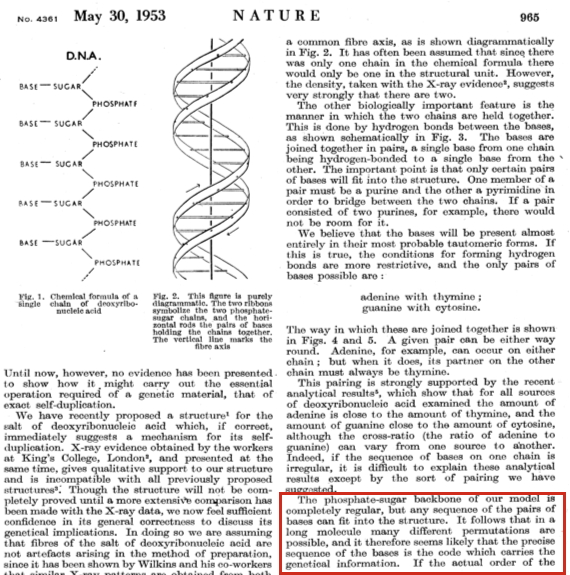whyevolutionistrue | The great step forward made by Watson and Crick in their second paper was to take these pre-existing ideas and reshape them in a less literal form. The sequence of bases was no longer seen in terms of a physical template for protein synthesis, but as something far more abstract – a code carrying genetical information.
What is intriguing is where this novel interpretation came from. The first person who explicitly suggested that genes contained a ‘code-script’ was the physicist Erwin Schrödinger, in 1943. Although his ideas were widely-read, there were few attempts to explore the idea of a ‘code’, because the physical nature of the gene was unknown.
The importance of ‘information’ as an abstract concept – so widespread in our modern view – was a direct product of war-time work on electronic transmissions by Claude Shannon, and on the development of control systems to guide anti-aircraft guns carried out by Norbert Wiener. In 1948, these two mathematicians each published a popular book – Information Theory and Cybernetics, respectively. (For best-sellers they contained a surprising number of mathematical formulae. Maybe people were more maths-savvy back then. Or more tolerant of things they didn’t quite understand.)
There were a growing number of meetings at which physicists, mathematicians and biologists tried to see how they could forge a new way of looking at life (the cyberneticians were particularly bold in this respect). In the end, nothing came of these attempts, but at some point along the way, the idea of seeing that genes contain ‘information’ seeped its way into Watson and Crick’s thinking, leading them to explain the implications of the double helix structure in this radically novel way.
How exactly the pair came up with the idea is not known (that’s why yesterday I asked Jerry to ask Watson this question when they met – we should get a post on this later today). We know that Crick wrote most of this article, in a terrible hurry. Did either of them read Shannon or Wiener? Or were these just terms they heard floating about on the Cambridge air, or idly discussed in the corridors at conferences? Whatever the case, today it is impossible to think about genes – or evolution – without using this powerful metaphor.



0 comments:
Post a Comment